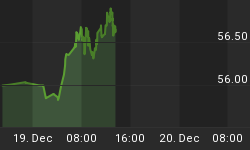In addition to revisions to third-quarter GDP data, the Commerce Department will release its first estimate of third-quarter corporate profits tomorrow, November 29. As Chart 1 shows, quarter-to-quarter profit growth slowed sharply in the second quarter - to 1.45% from 12.60% in the first quarter. Based on third-quarter labor cost data, I suspect that third-quarter corporate profit growth, measured sequentially, will remain tepid, at best. On a year-over-year basis, however, corporate profit growth is likely to appear rosier given the Katrina-depressed profits in the third quarter of 2005.
Chart 1
Here's the explanation. Chart 2 shows that in 2006, unit labor costs in the nonfarm business sector are now consistently growing faster than the prices nonfarm businesses receive for their goods and services. It can be shown algebraically that growth in the implicit price deflator for nonfarm business output minus growth in nonfarm business labor unit costs is equivalent to the gross revenues of nonfarm businesses minus their total labor costs.
Chart 2
Because labor costs account for the majority of production costs in the United States, rising growth in labor costs relative to the growth in total revenues would be expected to have a negative impact on corporate profits. And, in fact, this is exactly what the historical record shows, as demonstrated in Chart 3. Using annual average data, the contemporaneous correlation between these two series is 0.69 out of a possible 1.00. With unit labor costs rising relative to selling prices and with sales volumes slowing, it is difficult to see how corporate profit growth in the near-term can be very strong. And if profit growth slows, where will corporations get the funds to continue "retiring" equity at a record pace - a factor supporting share prices and household deficit pending?
Chart 3















